Sunday E-dition: The night I moved to Napa Valley, I met its most famous person
By Paul Franson
NAPA VALLEY, Calif. — I never imagined that the first person I’d meet when I moved to Napa Valley 27 years ago would be the most famous person who lived here.
In 1996, I was living in a fifth-floor walk-up near the top of Telegraph Hill in San Francisco’s North Beach neighborhood after I returned from living on my sailboat in the Caribbean.
I enjoyed living in the city and I was in great shape from all that walking and climbing, including frequent visits to Moose’s on Washington Square, where I first heard pianist Mike Greensill.
But I missed having a yard and growing things, and maybe a cat. Mostly, parking my Jeep Cherokee was a royal pain and not having a car would have been worse.
I decided to take a look at moving to Napa Valley, which I had first visited in 1968, then regularly after that. As I recounted in an earlier article, it was a natural choice for a wine nut and former home winemaker.
It was in January 1997 when I started looking, and downtown Napa was still sleeping. I decided to look up valley.
Fortunately, I found the perfect place south of St. Helena. I had to move my stuff from North Beach, of course. It wasn’t that much but it was on the fifth floor. I got a bid from the movers and set a date.
The day of the move, the two guys drove up, took a look at the stairs – five flights straight up with no intervening landings – and almost quit.
They did complete the move but charged extra at the end of the day. I couldn’t blame them and had little choice but to pay anyway.
It was then dinner time, and I had no energy to cook and little food in the house. I took a shower, put on some clean clothes and drove the mile to downtown St. Helena.
St. Helena was then the unquestioned heart of the valley and there were numerous places to eat. I best knew Tra Vigne, which was probably the top attraction in the valley then, but I was alone so chose a small restaurant on Main Street where Erosion is now. It was called Trilogy, and it had a few tables and a bar that held three people.
Two people were sitting at the bar, and as I sat down, I could see out of the corner of my eye that it was Robert and Margrit Mondavi, the most famous people in America’s wine world, and certainly in Napa Valley.
Being raised in a polite southern military family, I knew better than to interrupt them, but after a bit, Mr. Mondavi turned to me, looked me over and extended his big hand, booming in his growly voice, “Hi I’m Bob. Who are you?”
Margrit soon joined in and we had a pleasant conversation.
Bob, as he asked me to call him, was very interested in people, and genuinely so. After he dragged my background out of me, which wasn’t difficult, he invited me to come over to the winery and interview him.
Then he and Margrit moved to their table and I ate my dinner, went home and fell into bed.
I was pretty busy for a bit but mentioned the invitation to an editor I had written for at the San Francisco Examiner, then the morning paper. He asked for a profile on Mondavi.
I called the winery and said that Bob had invited me to interview him.
Little did I know that I unleashed a kerfuffle there.
Robert Mondavi Winery went public in 1993. By the time I met Bob, the investor relations people were trying to elevate Bob’s disciplined son, Michael, as the spokesman for the company and take the spotlight off Bob, a brilliant and insightful marketer who tended to say whatever was on his mind.
His comments weren’t always appropriate; he once predicated that the stock was going to double at an annual investor meeting. Of course it didn’t, but all of the reporters present liked Bob and none reported a comment that have would have surely precipitated expensive lawsuits.
Anyway, I was a bit of a pest and it took a while, but I did get the interview and wrote an article more than a page long with a big photo of Bob. My piece, titled “The wine modernist,” appeared in January 1998.
The article touted all of his accomplishments, but particularly focused on one Bob was given little credit for: innovation in viticulture and winemaking.
He told me that in 1962, bothered that California wines didn’t share the complexity and nuances of those in Bordeaux, he visited France to find out why. He discovered that one key reason was the use of small oak barrels instead of the large, generally redwood tanks used by most California wineries.
That change, soon widely accepted, culminated in the Paris Wine Tasting of 1976 when Stag’s Leap Wine Cellars bested the best of Bordeaux.
Of course, Mondavi’s wine wasn’t included in the tasting. I once asked him about that. He seemed sad, even bitter, that it wasn’t, and he felt it would have done well. Unfortunately, getting the bottles into France was a little complicated and his wine simply didn’t make it.
Mondavi’s winery, which he started in 1966 with his son Michael, also innovated in viticulture, including rootstock and clonal selection, vine spacing and restricted irrigation, all to improve the wines that came from them.
Not surprisingly, his To Kalon Vineyard became the most famous vineyard in America, though it’s now split among Constellation, Beckstoffer and other owners and has also been the subject of many lawsuits and disputes.
I had many interactions with Bob before he sold the company to Constellation in 2004 and died in 2008.
He was always friendly, though I’m sure he didn’t remember who I was, unlike Jean-Charles Boisset, the Frenchman who has assumed much of his mantle (and even bought their old house on Wappo Hill). Boisset is also interested in people but has a memory to shame an elephant.
Constellation Brands bought the winery in 2004 and Bob’s involvement dropped as he aged, but Margrit remained active as an ambassador for the brand.
She and I ended up having lunch at Bouchon at “her” table in the southwest corner of the restaurant every month. She always ordered a half bottle of Condrieu from the Rhône Valley. Drinking that exquisite wine was the reason that I still haven’t found a California viognier that tastes right.
Many grape varieties like chardonnay and cabernet sauvignon can make great wines in many places, though they taste very different. Chardonnay, for example, is a fairly neutral grape most influenced by its winemaking.
Other grapes like nebbiolo and sangiovese seem best wedded to certain terroirs.
Piero Antinori, the master of sangiovese in Tuscany, notoriously gave up on that grape in Atlas Peak and replaced it with cabernet.
“We have plenty of great sangiovese in Italy,” he supposedly said.
Likewise, the winemaker for the Trinchero’s Montevina Winery in the Sierra, now Terra d’Oro, told me she found the nebbiolo they grew, which make the great barolos of Piemonte, wasn’t impressive. She gave up and used it for rosé.
Constellation eventually pulled in the reins on Margrit’s expense account, but we continued the lunches for a while at the winery. Fortunately, Mondavi Winery chef Jeff Mosher is equal to any in the valley, so it wasn’t a loss. He remains there, or rather at the temporary Arch and Tower tasting room in downtown Napa, to this day.
So that’s the story of how I met the most famous person in Napa Valley the day I moved here.
Since then, I’ve met numerous celebrities from the wine and food world and elsewhere, usually at business functions, but that first encounter with the Mondavis remains one of my fondest memories.
Paul Franson is the editor of NapaLife, a weekly newsletter that focuses on news and events about food, wine and the arts.
"Rupert" is a comic series by Kathleen Scavone. Enjoy this clever and thoughtful work from a talented artist and writer.
Levity Corner
Caption contest. Pick your favorite caption or add your own in the comments below
Vote for your favorite in the poll below (there’s not enough room in the polls for the complete answers).
1. "Next time, let's not underestimate the 'slight staircase challenge' in the moving ad."
2. "I knew we should've asked for the elevator clause in our contract."
3. "I thought climbing the corporate ladder would be tough, but this is ridiculous!"
4. "Looking for the fine print that says, ‘levitation skills required.'"
5. Other. Please include your own caption in the comments below.
Last week’s winner
Last week’s caption contest winner (Source):
“The case of the missing calm: Suspect last seen beneath the avalanche of ‘I might need it someday.’” (26% of the votes)
Last Week @ Napa Valley Features
Glenda Winders shared her experience with spring cleaning in her article "Sunday E-dition: The great spring declutter." Driven by memories of her mother's extensive spring cleaning and inspired by the lockdown, Winders and her husband embarked on a six-month decluttering spree, influenced by Francine Jay's book "The Joy of Less." They started with holiday decorations, then moved on to unused massage equipment and other household items. They set up a free store in their laundry room for friends and a carpenter who was able to furnish his apartment with items from their home. Winders also donated clothes and arranged her closet by color, inspired by an essay by Ann Patchett on not shopping for a year. This decluttering journey led her to reflect on the reasons behind accumulating possessions and the freedom felt from living with less.
In "Lake Berryessa's Glory Hole teeters on edge," Peter Kilkus discussed the near-overflow status of Lake Berryessa's Glory Hole spillway as of March 26, 2024. The lake level reached 439.6 feet, just 5 inches shy of the overflow mark at 440 feet, causing a sense of anticipation and frustration among observers. Kilkus used this situation to explain the mathematical concept of an asymptote, likening the lake's gradual approach to the overflow point without actually reaching it. He also debunked the misconception of the Glory Hole creating a dangerous vortex, clarifying its structure and operation. The article delved into the complexities of water management, conservation laws and the historical context of the lake's water levels, highlighting the variability of natural systems and the challenges in predicting and managing them.
"‘We Can Change the World: Tales From a Generation’s Quest for Peace and Justice’" by Sasha Paulsen featured Douglas Murray, a former professor and author, who looked back on his journey through life and the impactful individuals he encountered. The story, rooted in Murray’s childhood in Napa Valley, traced the cultural and political changes of the 1960s and beyond. Murray recounted experiences from his draft bureau days to communal living in Napa and his travels with the Venceremos Brigade to Cuba, further exploring social change in Nicaragua. His encounters with a variety of influential figures, like a sugar planter’s daughter and a Canadian diplomat assisting Chilean refugees, illustrated a generation committed to justice and peace. Despite evolving times and continuing global conflicts, Murray's book stands as a powerful reminder of the individual's potential to drive change and inspire future generations to dream and act.
In "Gardening gracefully: adaptive garden practices," retired occupational therapist Peggy McConnell shared tips for aging gardeners to continue their hobby with less physical strain. McConnell emphasized light stretching, hydration, sun protection and using protective gear. She recommended organizing tools, planning heavy tasks for high-energy times, taking breaks and using lightweight and ergonomic tools. Seated gardening, sharp tools and ergonomic designs were suggested for those with arthritis or wrist issues, helping gardeners maintain their passion with minimal strain.
Last week, Dave Stoneberg covered veteran racer Dave Olson's participation in the Classic Sports Racing Group’s David Love Vintage Races at Sonoma Raceway with his rare 1939 Alfa Romeo, in the article "Rare 1939 Alfa Romeo takes to the track at Sonoma Raceway." Olson, who has owned around 15 race cars over his nearly 30-year career, chose this particular Alfa Romeo for its unique appeal. Despite the Alfa’s size and age making it less competitive against nimbler cars, Olson’s focus was on preserving and sharing this piece of racing history. The event, which featured groups of cars based on type and engine size, attracted 174 vintage cars ranging from 1939 to 1993, including Olson's Alfa Romeo and a 1957 Porsche 356 Speedster. Stoneberg’s article captures the essence of vintage car racing, emphasizing its role in celebrating historical vehicles and the communal spirit among enthusiasts.
Tim Carl spotlighted LJ Crafted Wines, a pioneering urban winery in La Jolla, in his article "Under the Hood: Barrel to bottle — A sustainable blueprint for wineries." This winery is leading the way in bottle reuse, a growing environmentally friendly trend. Lowell Jooste, with a winemaking background from South Africa, established the winery with his wife Anne, in La Jolla after relocating from Napa Valley. LJ Crafted Wines stands out for its unique approach to wine retailing: selling wine directly from barrels using a patented system, encouraging bottle refills rather than single-use purchases. This model aims to address the sustainability challenges posed by conventional glass wine bottles, which contribute significantly to a winery's carbon footprint. Bottle reuse, as opposed to recycling, offers substantial environmental and economic benefits by conserving energy and reducing waste. With its high customer return rate for growlers and sustainable practices, LJ Crafted Wines sets an example for the wine industry in the United States and beyond, promoting a shift towards more eco-friendly and economically viable practices.
In "Memorable wines, experiences found in Napa’s tasting rooms," Eduardo Dingler showcased the distinctive wine shops of Napa. He highlighted Outer Space Wines for its curated selection and welcoming atmosphere, and Compline Wine Bar for its wide range of international wines and educational offerings. The article reflects the unique charm and community-centric nature of these shops, underlining the depth and diversity of Napa's wine culture.
Last week, Dan Berger delved into the complexities of the sangiovese grape in California and its Italian origins in his article "Dan Berger’s Varietal Views: Sangiovese." Berger compared the Californian iteration of sangiovese to its traditional Italian counterpart, particularly Chianti. He noted the historical casual enjoyment of sangiovese in Italy, its adaptation in California vineyards, and the legal and stylistic changes over the years. Berger's insights highlighted the grape's unique characteristics, such as its acidity and compatibility with certain foods. The article underscores the evolving nature of sangiovese, both in its traditional Italian form and its more recent expressions in Californian winemaking.
Next Week @
Next week, Napa Valley Features' audience can anticipate articles that offer both tribute and insight. Hansen will honor the history of Chinese laborers with a discussion of a new memorial monument. Stoneberg is set to explore the Napa Valley Museum's expansion into St. Helena. Drew Dickson, in his debut contribution, navigates the waters of Napa Valley with a feature on kayaking, while the Master Gardeners will bestow their regular horticultural wisdom. Berger examines gewürztraminer varieties, as Virginie Boone spotlights Joann Serafini's advocacy for animal welfare with Jameson Humane. The Weekender continues as the essential guide to local happenings, and closing the week, Dunbar presents an "under the hood" look at workforce and economic trends in Napa County.


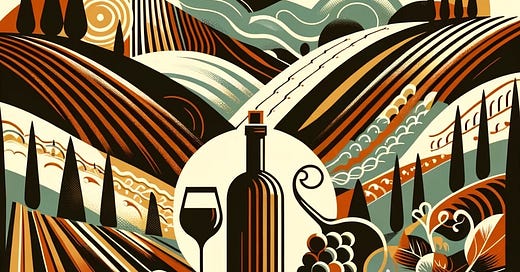


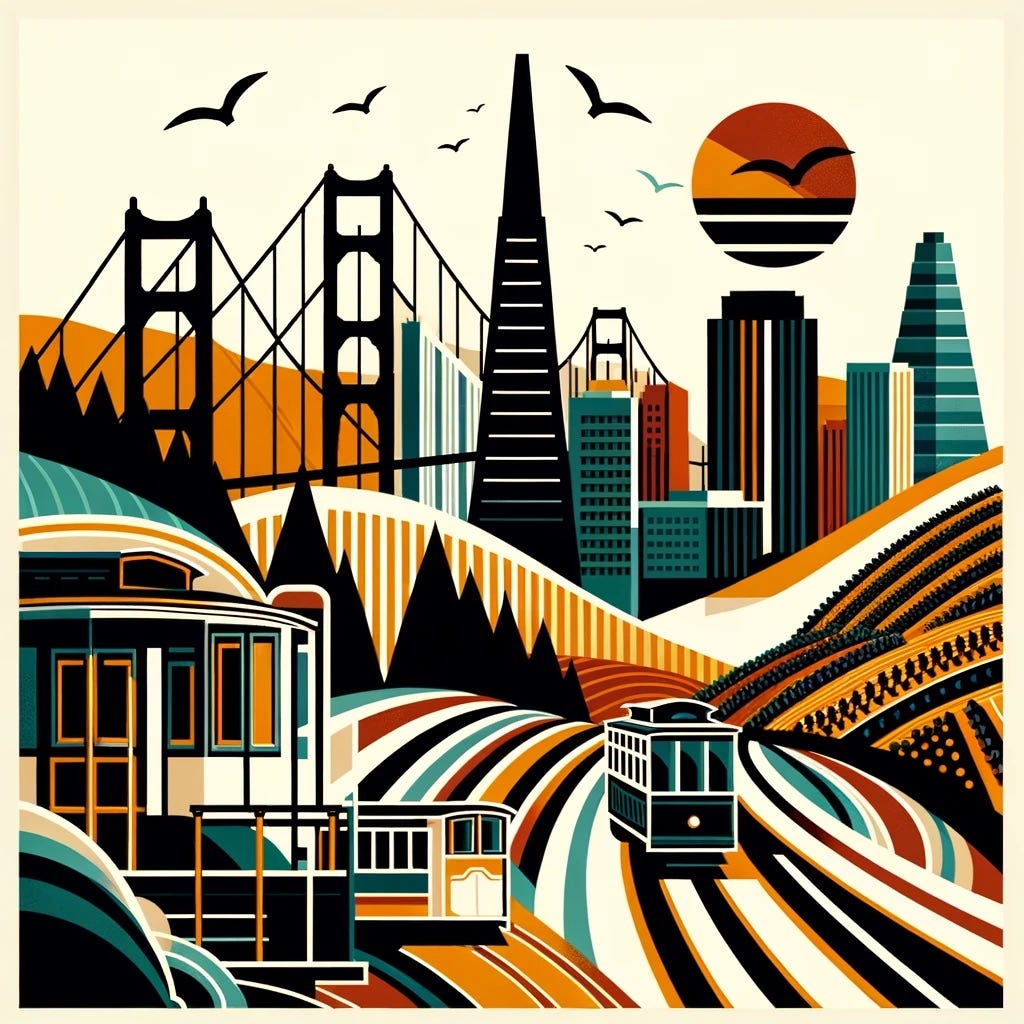
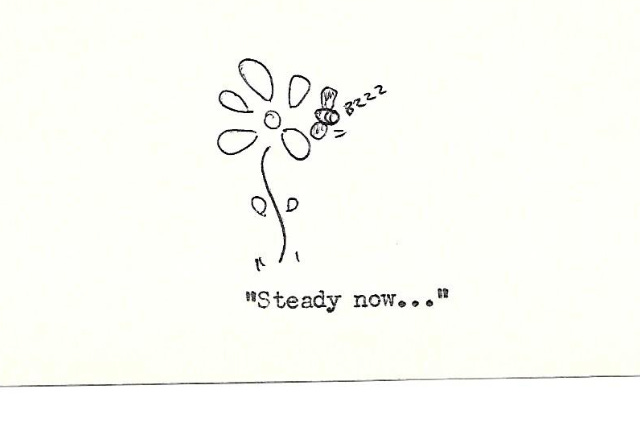

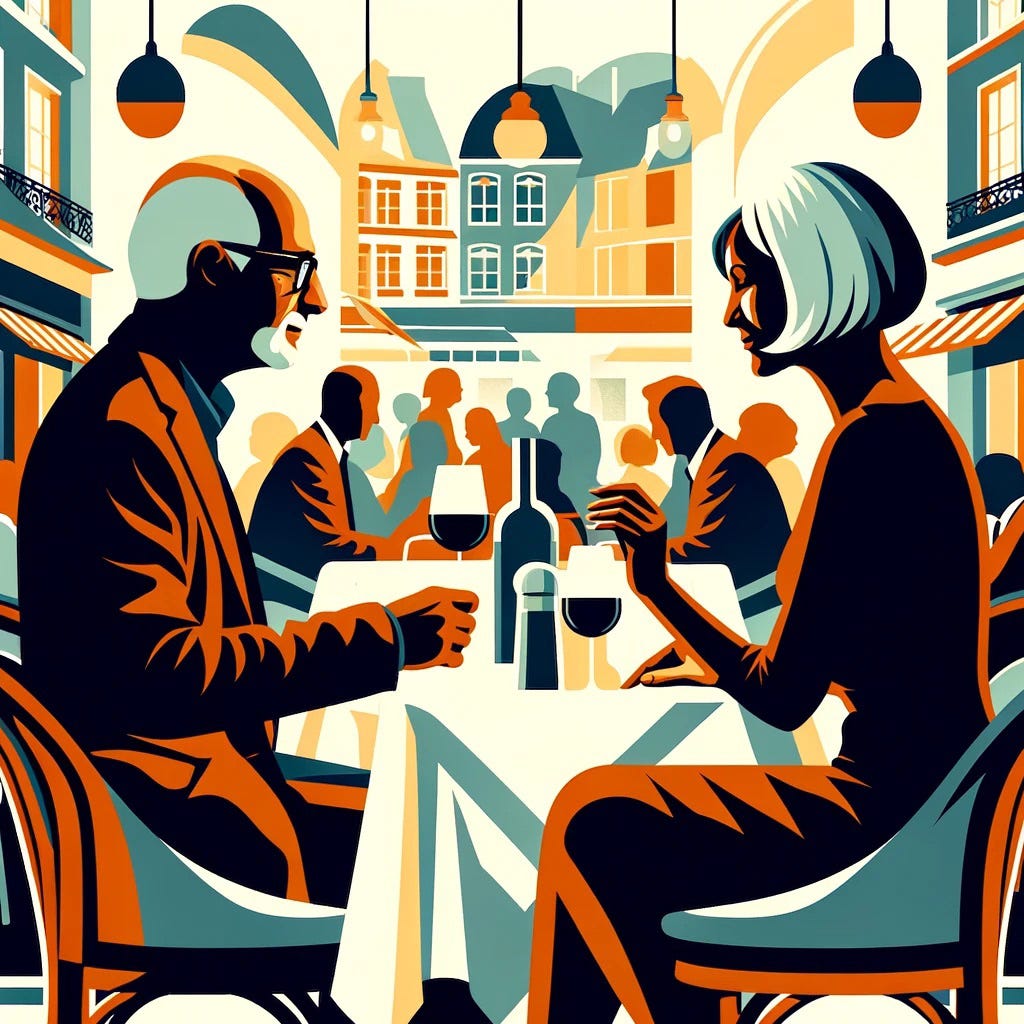
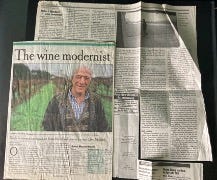

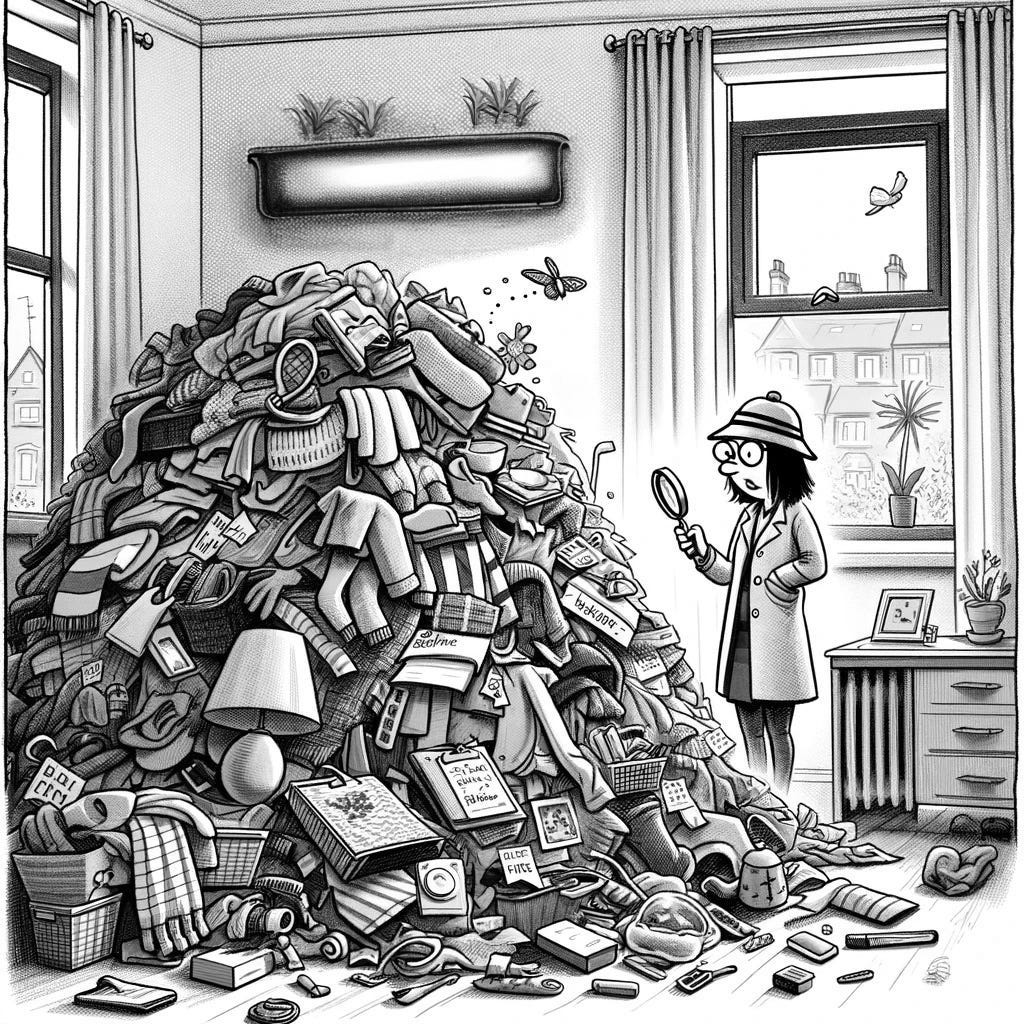

Nice read Paul, thank you for sharing your insights.
Why did Paul Franson hire Escher to design his place?